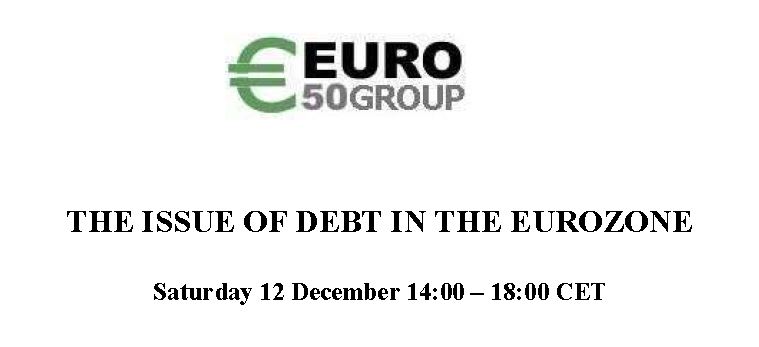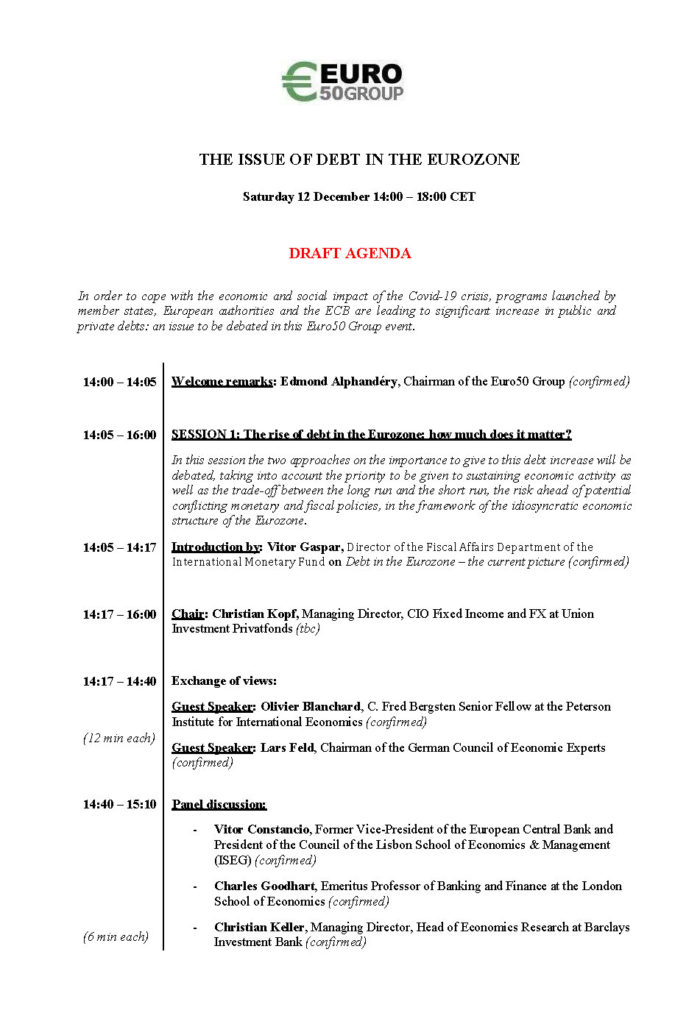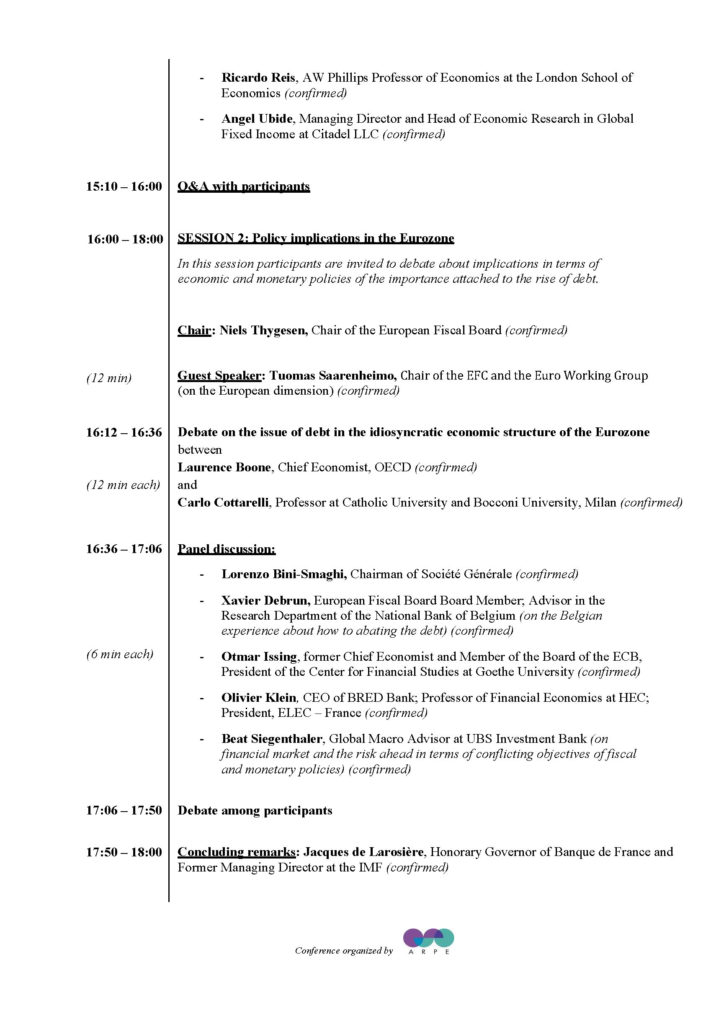OPINION. When a very serious economic and financial crisis occurs in a context of near-zero short-term interest rates and prior over-indebtedness, central banks turn to unconventional monetary policies.
Some push interest rates below zero, and all launch a Quantitative Easing (QE) programme to control the long-term rates and risk premiums (spreads) of both public and private debt. This means central banks can use their conventional and unconventional policies to bring short and long interest rates to very low levels and prevent spreads from rising to levels that would trigger a catastrophic chain of bankruptcies due to a sharp rise in insolvency. Very low rates also have a direct positive effect on demand, as well as on the value of capital assets (real estate and equities in particular), which has a positive impact on demand and supports credit.
During these crises, monetary policy – even of the unconventional type – has the de facto objective of lowering nominal interest rates below the nominal growth rate. This clearly helps revive the economy and facilitates deleveraging by making debt easier to repay.
So what could possibly be the danger of such a monetary policy that protects the economy against systemic crisis and a deep recession? The risk lies in adopting a monetary policy which, in fact, is asymmetric. While it is very useful – essential, even – when central banks adopt this type of policy in such situations, in reality we are witnessing a problematic asymmetry: when growth returns with a noticeable recovery in credit, central banks fail to sufficiently reverse their policy, increase their interest rates or scale down their QE – that is, the quantity of central bank money – if they do so at all.
In the eurozone, the official reason has often been that inflation was still too low, meaning the inflation target had not yet been reached, which justified maintaining an ultra-accommodative monetary policy. However, isn’t inflation structurally, and not cyclically, very low, due to the effects of globalisation and technological progress (automation) – which exert downward pressure on wages – combined with the ageing of the world’s population? In this case, is monetary policy capable of increasing it? If monetary policy cannot raise inflation that is fundamentally very low, it obviously becomes dangerous to continue to pursue such a policy for too because it then keeps interest rates below growth rates for too long – “too low for too long”. This causes a financial loop: debt rises faster than economic growth, which leads to over-indebtedness all over again and the return of real-estate or stock bubbles.
It is a vicious cycle, because debt is also used to buy these capital assets, which feeds the bubbles and facilitates more debt. That is how the entire economy becomes more financially vulnerable, with risks embedded in the balance sheets which only grow:
1/ In the assets of financial investors and/or savers
They are looking for even a small return at any cost, since interest rates are too low. So they’re going to take more and more risk in order to get it. The risk premiums are thus compressed in a way that is completely abnormal and obviously dangerous, because when the bubbles burst, the spreads will simply not have covered the cost of the proven risk. The assets of savers and financial investors (who work for the savers: pension funds, insurers, investment funds, etc.), are thus made vulnerable. Pre-pandemic, this led to, among other things, a sharp historical drop in yields on investments in infrastructure, historically low credit spreads, very high valuations for listed and private equity companies, and investment funds holding assets that were more and more illiquid and/or with very long maturities, while ensuring the daily liquidity of these same funds, etc.
2/ In borrowers’ liabilities
Borrowers’ are taking on too much debt under these conditions, which leads to excessive leverage. Among other things, there has been a great deal of share buybacks by companies themselves, notably in the United States. So now it’s the liabilities themselves that are becoming vulnerable. They are vulnerable to a drop in cash flows linked to a slowdown in growth as well as a rise in interest rates. This, in turn, leads to a significantly larger risk of insolvency.
When the above two points combine, there is growth in the number of “zombie companies”, that is to say companies which survive, but which are not structurally profitable and which would go bankrupt at normal interest rates. This phenomenon naturally contributes to a less-efficient economy and lower productivity gains.
Maintaining interest rates that are too low for too long, when they are no longer necessary to fight against insufficient growth of the economy and loans, therefore creates a very risky situation in the long term. An asymmetric monetary policy reaction can thus lead to more financial instability, the progressive loss of economic efficiency with a decline in productivity gains and, ultimately, a succession of financial crises. This was the pre-COVID-19 situation.
The financial situation thus became catastrophic at the very beginning of the COVID crisis because the pandemic produced a dizzying drop in production and violent contractions in income and cash flow for companies against a prior backdrop of significant financial vulnerability.
By the end of March, the financial crisis caused by COVID was already more severe than that of 2008-2009, with stock-market volatility twice as high, spreads which shot up, and very problematic liquidity shortages, particularly in investment funds. Fortunately, the central banks responded at lightning speed: they lowered their rates when it was still possible – in the United States in particular – though not on the European side because they had not come back up even after growth returned in previous years. They also began to buy public and private debt, including high-yield debt, and sometimes even equities, by increasing their quantitative easing considerably. They also adopted macroprudential adjustment measures.
Central banks thus quite rightly made it possible to relieve a catastrophic financial situation within a few weeks and have supported the efforts of governments in favour of the economy through the massive use of an unconventional monetary policy. But, very soon, we’ll have to answer the following question: When growth does return to a satisfactory level, how can we exit this monetary policy if governments and companies are even more indebted? Of course, right now the central question is how to get out of an unprecedented economic crisis. And yet, despite everything, we must now think about how we will eventually escape from an exceptional situation where central banks have rightly suspended the logic of the market temporarily, by intervening deliberately and massively to ensure the liquidity of the markets and the solvency of governments and, in conjunction with government action, the solvency of companies by controlling interest rates and spreads.
First of all, the exit will need to be a very gradual one. The situation will indeed be problematic, because at the end of the crisis a number of companies will be over-indebted, especially because they will have had, and fortunately will have been able, to finance their losses, and many governments will be over-indebted, too. In addition, we will have to deal with bubbles on capital assets; prices are already rising sharply, both for residential real estate and equities. If we then raise rates too quickly by a poorly-planned withdrawal of QE, and if we hastily put an end to negative interest rates, it could have a disastrous effect on solvency in the private and public sectors. This, of course, could lead to the risk of a crash in capital-asset markets, which would reinforce widespread insolvency. The exit must, therefore, be very gradual.
Central banks would also be in a bind if inflation recovered in two or three years. If it did, should they maintain the solvency of economic agents at the cost of potentially uncontrollable inflation? Or do the opposite?
But, even if inflation did not recover, should central banks continue their QE ad infinitum if governments and companies – whether by necessity or by choice – did not deleverage? This would result in structurally increased financial instability, both in terms of over-indebtedness and increasingly extreme bubbles, with all the dangers such instability would involve. There would be an increasing moral hazard since borrowers, both private and public, would no longer fear over-indebtedness. Investors would believe that central banks would always rescue them from crashes with no repercussions, and would thus be encouraged to underweight the price of risk in their financial calculations in the long-term. Lastly, the economy would see more and more zombie companies and less of the creative destruction necessary for growth. This would lead to a lasting decline in productivity gains that would, among other things, structurally slow down gains in real purchasing power.
Ultimately, the risk of the unlimited monetisation of debts would lead to a catastrophic flight from currency.
First conclusion: to maintain their credibility, and therefore their efficiency, including during systemic crises, central banks must protect themselves, not only against the well-known risk of fiscal dominance, but also against that of financial market dominance to avoid falling into increasingly strong, violent and potentially very dangerous crises. In other words, they must not be dominated either by governments which might want their continuous intervention to “guarantee” their solvency, or by the financial markets. Central banks need to be in a strategic relationship with financial markets. And they should not be afraid to channel collective images and average market opinions into sustainable fluctuation ranges, insofar as possible, or to counter them if need be. Even if the markets today are always asking for more aid to continue their upward momentum. As Fed Chair Jerome Powell said recently, and quite rightly: “The danger is that we get pulled into an area where we don’t want to be, long-term. What I worry about is that some may want us to use those powers more frequently, rather than just in serious emergencies like this one clearly is”.
Second conclusion: alongside the policies implemented by central banks – which need to start thinking about how they will eventually escape their ultra accommodative policies – we need fiscal policies that are sustainable in the medium-term. Not immediately, however, because we need to avoid austerity at all costs in the coming years. Structural reforms will also be necessary to increase the growth potential of each economy. Ultimately, this is the best way to escape over-indebtedness.
That includes policies that aim to increase corporate equity. To reduce excess debt – without hindering growth – we will need much more investment in equity and quasi-equity (equity loans, convertible bonds, etc.). Incentives will therefore be needed to direct household savings towards riskier capital, as well as measures targeting the cost of excess reserves of banks and insurers so as not to make their investments in corporate equity prohibitive. Temporarily, a system where the government partially guarantees the invested capital may prove necessary.
Central Banks cannot do everything on their own. Expecting too much of them can be dangerous, even for their efficiency, when it becomes necessary again.






